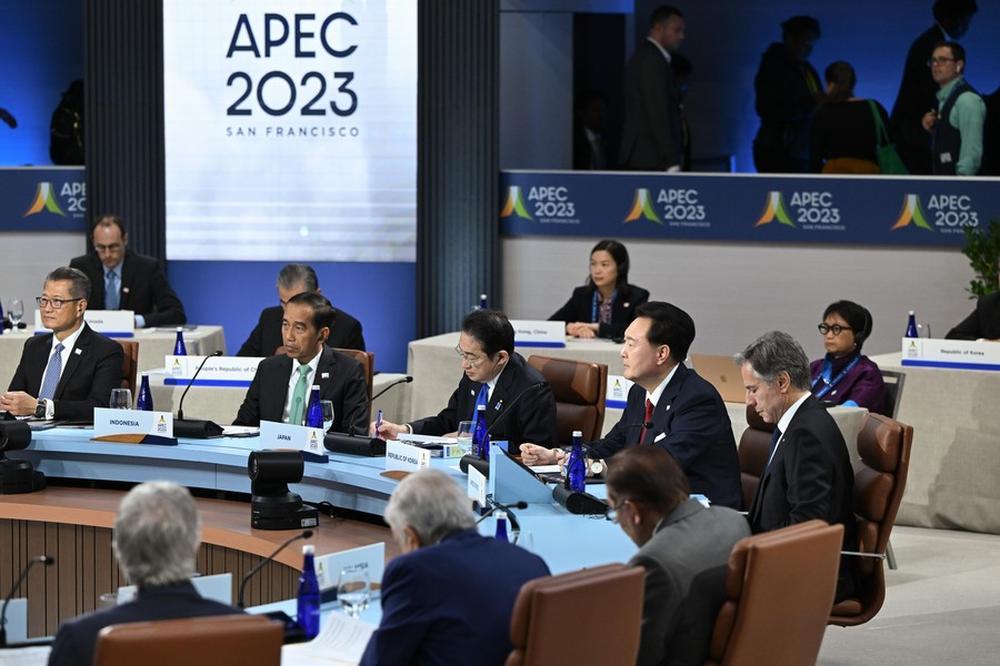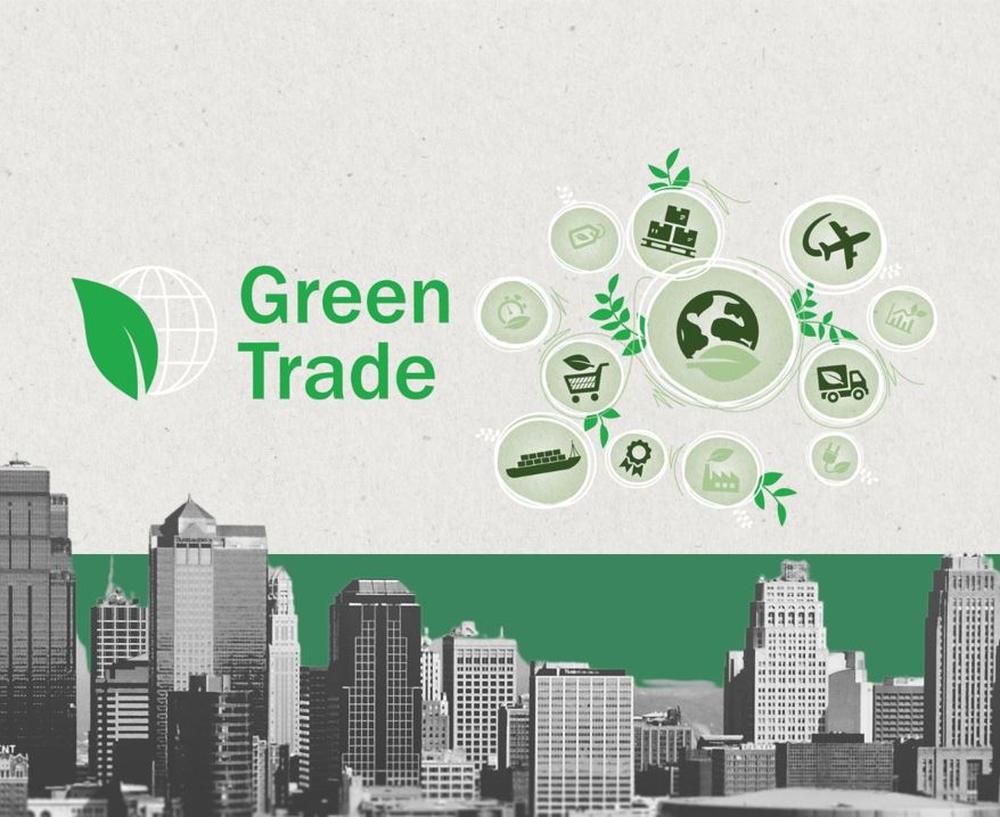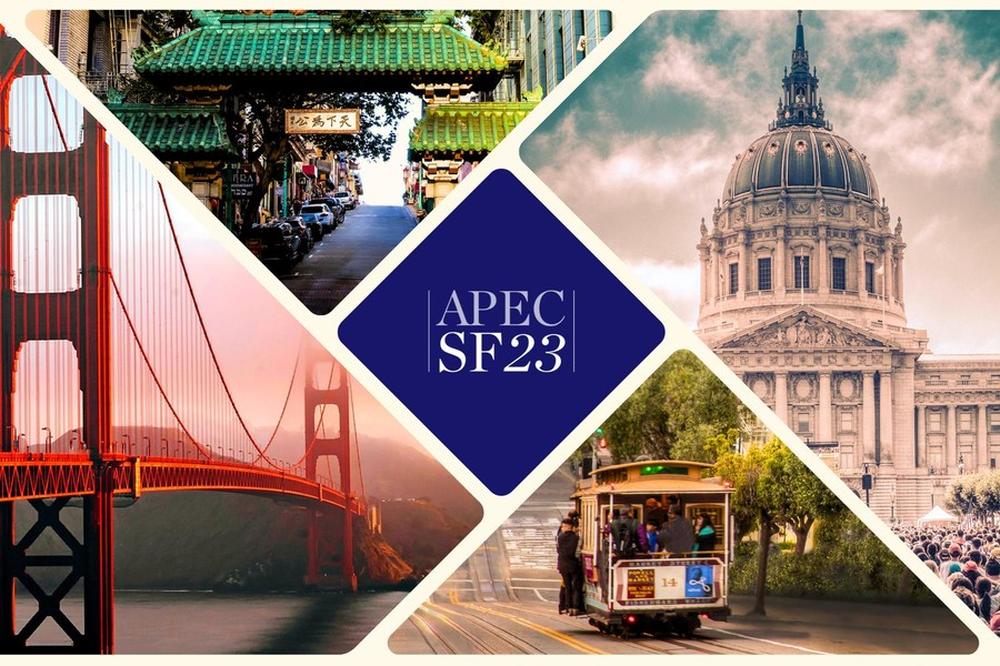- #Economy & Trade
- #Global Issues
- #Multilateral Relations

► All agreements for the IPEF were meant to be concluded during the 2023 APEC summit, but participating countries failed to reach a deal on trade, including the labor and environmental sectors, due to the differing laws and policies of each country, and decided to continue negotiations.
► "San Francisco Principles on Integrating Inclusivity and Sustainability into Trade and Investment Policy" [explains that] by fostering quality growth, trade and investment policies should become drivers of inclusive and sustainable growth not only in the Asia-Pacific region but also in the global economy, and provide welfare and benefits to small- and medium-sized companies, women, and economies with untapped potential.
► The Korean president also pronounced the need for the Korean government's contribution and solidarity with APEC member states in the transition to clean energy and overcoming the climate crisis.
This November, the US is hosting the Asia-Pacific Economic Cooperation (APEC) summit. The APEC summit is a forum that brings together leaders from 21 Asia-Pacific economies, including South Korea, the US, Japan, and China, to discuss inclusive and sustainable growth, innovation and digitalization, and methods to promote trade and investment. More specifically, APEC pursues reciprocity-based open regionalism, which aims to extend the benefits of regional liberalization to countries outside the region, and makes decisions based on non-binding implementation and consensus. In this sense, APEC is an important incubator for new ideas for regional cooperation and a catalyst for cooperation.
With the end of the Cold War in the 1990s, countries began pursuing both regionalism and globalization simultaneously based on their own economic interests. European countries launched the European Union (EU) in 1993, and the US implemented the North American Free Trade Agreement (NAFTA) with Mexico and Canada in 1994. South Korea, Japan, and six ASEAN countries (Malaysia, Indonesia, Thailand, Singapore, Philippines, and Brunei) also recognized the need for a regional cooperative body and, in 1989, founded the APEC ministerial meeting as an intergovernmental cooperation forum for the Asia-Pacific region along with the US, Canada, Australia, and New Zealand. The ministerial meeting was upgraded to the summit level in 1993. At the APEC ministerial meeting in Seoul in 1991, Korea, which spearheaded the creation of APEC along with Australia, announced the "Seoul Declaration," which serves as APEC's charter, positioning itself as a leader of APEC's establishment. From its establishment until 1998, nine more economies - China, Hong Kong, Taiwan, Mexico, Papua New Guinea, Chile, Peru, Russia, and Vietnam - have joined, making APEC the largest economic cooperative body in the world, accounting for 60 percent of global GDP, 50 percent of global trade volume, and 40 percent of the world's population.
The second summit in 1994 adopted the Bogor Goals, which set a target year for achieving liberalization of trade and investment in the region, contributing to halting the spread of protectionism. Meanwhile, APEC contributed to multilateral trade liberalization by providing a platform for the World Trade Organization's (WTO) 1996 Information Technology Agreement (ITA) and 2012 Environmental Goods Agreement (EGA). In addition, upon reaching the target date for the Bogor Goals in 2020, the 27th summit adopted the Putrajaya Vision 2040, which aims to foster an "open, dynamic, resilient and peaceful Asia-Pacific community by 2040," and identified three key economic drivers - trade and investment, innovation and digitalization, and sustainable and inclusive growth.
While the Bogor Goals aimed to liberalize trade and investment in the region, Putrajaya Vision 2040 is meant to establish a free, open, and predictable trade and investment environment. However, due to intensified US-China hegemonic competition, in the process of adopting Putrajaya Vision 2040, the US has focused on free and open trade and eliminating market-distorting behavior, while China has argued that a wide range of important topics covered at APEC, such as abolishing unilateral protectionism, maintaining global supply chains, and energy accessibility, should be included, leading to sharp conflict among member countries. Nevertheless, a new vision for cooperation in the Asia-Pacific was born thanks to the determination to establish a multilateral trade system that functions within established WTO norms and increases the stability and predictability of international trade flows.
However, even after Biden's inauguration in the United States and the start of Xi Jinping's third term, hegemonic competition between the US and China has continued. Two prime examples include the entry into force of the Regional Comprehensive Economic Partnership (RCEP) and the launch of the Indo-Pacific Economic Framework for Prosperity (IPEF) in the Asia-Pacific region. Most APEC members except Russia and China participate in the US-led IPEF, while the US does not participate in RCEP. Through RCEP, China is trying to exert greater economic influence over Southeast Asian countries, and through the IPEF, the US intends to establish new regional norms structured around four pillars - trade, supply chains, clean economy, and fair economy.
All agreements for the IPEF were meant to be concluded during the 2023 APEC summit, but participating countries failed to reach a deal on trade, including the labor and environmental sectors, due to the differing laws and policies of each country, and decided to continue negotiations. Considering most of the areas addressed by the IPEF and RCEP are included in the various APEC fora agendas, I hope that APEC can serve as a place to address conflicts between the two sides. Of course, this will not be an easy task. I recall that when the US tried to include the IPEF on the agenda at the APEC Committee on Trade and Investment meeting in August 2023, China strongly opposed. The two sides must resolve misunderstandings through dialogue and work together to build a free and open trade and investment environment in the Asia-Pacific.
In this respect, the summit between President Biden and President Xi Jinping at the recent APEC summit is particularly significant. The two sides agreed to resume military dialogue and regulate fentanyl as well as work together to combat the climate crisis. Of course, with President Biden's references to human rights, freedom of navigation, and China's unfair trade policies and non-market economic measures, it is hard to say that the two countries have agreed to avoid further conflict. However, the emphasis on the importance of managing bilateral competition could mean an opportunity for a "temporary ceasefire."
Meanwhile, the theme of this year's APEC summit, which took place in San Francisco from November 15 to 17, was "creating a resilient and inclusive future for all." The summit explored ways to build a resilient and interconnected region that promotes broader economic prosperity, foster an innovative environment for a sustainable future, and guarantee a fair and inclusive future for all. Including resiliency and inclusivity as key elements of the summit demonstrates a commitment to foster a free and open trade and investment environment to increase interconnectivity and resilience by using innovative digital tools. This goes hand in hand with the Putrajaya Vision 2040 mentioned above.
As an annex to the Leader's Declaration, this year's summit also adopted the "San Francisco Principles on Integrating Inclusivity and Sustainability into Trade and Investment Policy." The principles explain that while trade and investment have contributed to economic growth and improved standards of living not only within the APEC region but also around the world, it is now time to develop policies to ensure that all peoples and economies in the region can enjoy the benefits of sustainable and resilient economic growth through trade and investment. In other words, by fostering quality growth, trade and investment policies should become drivers of inclusive and sustainable growth not only in the Asia-Pacific region but also in the global economy, and provide welfare and benefits to small- and medium-sized companies, women, and economies with untapped potential. Moreover, the principles made it clear that trade policies should be developed based on the values of sustainability and inclusivity to address environmental and climate change challenges.
The Korean president also pronounced the need for the Korean government's contribution and solidarity with APEC member states in the transition to clean energy and overcoming the climate crisis. He emphasized that transitioning to eco-friendly mobility is the most effective way to contribute to climate change response, sharing examples of Korea's eco-friendly cars, self-driving cars, smart mobility, and next-generation low carbon ships. He also mentioned the need for APEC's cooperation in restoring the multilateral trading system, enhancing regional supply chain connectivity, and establishing digital ethical norms amid the complex global crisis. Korea's efforts are in line with the theme of the US APEC summit, which emphasized sustainability and inclusivity as well as the Putrajaya Vision 2040, and they also contribute to regional integration.
South Korea, a country that spearheaded the establishment of APEC, will host the APEC summit in 2025. Embodying its role as a Global Pivotal State, Korea hopes to contribute to the establishment of a free trade and investment environment and inclusive and sustainable growth in the Asia-Pacific region.


